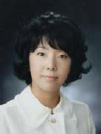|
|
|
| |
| ABSTRACT |
|
Metabolic syndrome is associated with an increased risk of cognitive impairment. The purpose of this prospective pilot study was to examine the effects of dance exercise on cognitive function in elderly patients with metabolic syndrome. The participants included 38 elderly metabolic syndrome patients with normal cognitive function (26 exercise group and 12 control group). The exercise group performed dance exercise twice a week for 6 months. Cognitive function was assessed in all participants using the Korean version of the Consortium to Establish a Registry for Alzheimer’s disease (CERAD-K). Repeated-measures ANCOVA was used to assess the effect of dance exercise on cognitive function and cardiometabolic risk factors. Compared with the control group, the exercise group significantly improved in verbal fluency (p = 0.048), word list delayed recall (p = 0.038), word list recognition (p = 0.007), and total CERAD-K score (p = 0.037). However, no significance difference was found in body mass index, blood pressure, waist circumference, fasting plasma glucose, triglyceride, and HDL cholesterol between groups over the 6-month period. In the present study, six months of dance exercise improved cognitive function in older adults with metabolic syndrome. Thus, dance exercise may reduce the risk for cognitive disorders in elderly people with metabolic syndrome. |
| Key words:
Dance exercise, cognitive function, metabolic syndrome, elderly, CERAD-K
|
Key
Points
- Metabolic syndrome (MS) is associated with an increased risk of cognitive impairment.
- Aerobic exercise improves cognitive function in elderly people and contributes to the prevention of degenerative neurological disease and brain damage. Dance sport is a form of aerobic exercise that has the additional benefits of stimulating the emotions, promoting social interaction, and exposing subjects to acoustic stimulation and music.
- In the present study, dance exercise for a 6-month period improved cognitive function in older adults with MS. In particular, positive effects were observed in verbal fluency, word list delayed recall, word list recognition, and the total CERAD-K score.
- Our data suggest that the implementation of dance exercise programs may be an effective means of prevention and treatment of cognitive disorders.
|
The proportion of people aged 65 years and over in Korea is expected to increase from 7.3 % in 2000 to 15.1% in 2020 (The National Statistical Office, 2009). As the geriatric population rapidly increases, the number of elderly people with dementia is also expected to increase dramatically. In Korea, the incidence of dementia was 8.68 %, and the number of patients with dementia was estimated to reach 430,000 in 2008. Dementia is one of the most distressing and burdensome mental health problems affecting older adults. It is characterized by the deterioration of cognitive function, behavior, and mental ability, impairs occupational and social activity, and significantly decreases quality of life. Thus, early intervention for individuals who are at increased risk of dementia is critical. Metabolic syndrome (MS) is a cluster of cardiovascular risk factors, and like cognitive impairment, the incidence of MS is rapidly increasing in people over 60 years of age (Reynolds and He, 2005). MS is associated with an increased risk of cognitive impairment (Komulainen et al., 2007; Solfrizzi et al., 2009; Yaffe et al., 2004). The results of a prospective study conducted in adults over the age of 70 years showed that cognitive function was significantly impaired in the patient group with MS (Yaffe et al., 2004). The risk of progressing from mild cognitive impairment to dementia was significantly increased in patients with MS (Solfrizzi et al., 2009). Furthermore, as the number of cardiovascular risk factors such as hypertension, diabetes, hyperlipidemia, and smoking increased, the risk of dementia increased (Whitmer et al., 2005). Aerobic exercise improves cognitive function in elderly people and contributes to the prevention of degenerative neurological disease and brain damage (Colcombe et al., 2003; Kramer et al., 1999; Laurin et al., 2001; Stummer et al., 1994). Dance sport is a form of aerobic exercise that does not require special equipment and can be performed anywhere regardless of season or weather. Dancing is an ideal exercise to relieve tension and pressure, and it is an enjoyable social activity that improves fitness levels. Dance has been shown to reduce body fat and body mass index (BMI) and to improve blood pressure and glycemic control (Gillett and Eisenman, 1987; Murrock and Gary, 2010; Murrock et al., 2009; Shimamoto et al., 1998). Dance has also been successful in promoting healthy activity in older adults and dementia patients (Hokkanen et al., 2008; Jeon et al., 2005; Kim et al., 2003; Palo-Bengtsson and Ekman, 2002). It stimulates multiple processes within the cognitive apparatus, including visual and auditory perception and the capacity to follow instructions (Brown et al., 2006). Compared with other aerobic exercises, dance sport has the additional benefits of stimulating the emotions, promoting social interaction, and exposing subjects to acoustic stimulation and music (Kattenstroth et al., 2010). Thus, dance might be a more effective modality to improve cognitive function than other aerobic exercises. Most studies employing dancing as an intervention in the elderly have focused on improvement in cardiovascular parameters, muscle strength, posture and balance (Adiputra et al., 1996; Crotts et al., 1996; Hui et al., 2009; Kreutz, 2008; Shigematsu et al., 2002; Sofianidis et al., 2009), but few studies have examined the effect of dancing on cognitive abilities. We therefore performed the present prospective pilot study to examine the effects of dance exercise on the cognitive function of elderly patients with MS. ParticipantsParticipants were drawn from a cohort of adults aged over 60 years who participated in health promotion programs at a public health center located in Kyung Gi province between March and August 2010. Of the 60 volunteers, 16 who failed to meet the inclusion criteria were excluded (4 withdrew participation; 7 physical health exclusion such as uncontrolled hypertension, arrhythmia, COPD, suspicious coronary heart disease and symptomatic arthritis; 4 mental health exclusion such as cognitive impairment, depressive symptoms; 1 could not be recontacted), and six people dropped out within 4 weeks of the study initiation due to exacerbation of pre-existing osteoarthritis, fall down in the house, move to another area, palpitation and family problem. Thus, 26 Completed 6 months follow-up and the primary analysis was conducted on 38 older adults (26 in the exercise group and 12 in the control group; Figure 1). Cognitive function was assessed in all subjects, and height, weight, waist circumference (WC), and BP measurements were taken. Blood samples were obtained after a 12-hour fast. Fasting plasma glucose, total cholesterol, triglyceride (TG), and high density lipid (HDL) cholesterol levels were measured using an auto-analyzer (Hitachi 747 auto-analyzer, Hitachi, Tokyo, Japan). The exclusion criteria included (1) dementia or suspected dementia according to the DSM-IV diagnostic criteria; (2) the deterioration of hearing or vision or presence of speech disturbance; (3) neurological impairment that may have caused cognitive dysfunction; (4) difficulty in performing daily routines; (5) a cardiac history of unstable angina, recent myocardial infarction within the last 3 months, congestive heart failure, significant heart valve dysfunction, or unstable hypertension; 6) taking medications that could negatively affect cognitive function; and (7) psychological conditions that could affect cognitive function. Additionally, in accordance with the recommendations of the American College of Sports Medicine, an exercise stress test was performed on the high-risk group to detect cardiovascular disease associated with fainting, chest pain, fatigue, arrhythmia or tachycardia, dyspnea, edema in the lower limbs, and limping symptoms (ACSM., 1991). Subjects showing abnormal exercise stress test results were excluded from the study. The control group continued their daily activities and routines, while the exercise group attended dance sport classes tailored to their physical condition twice a week for 6 months. The present study was approved by the Research Ethics Committee of the Catholic University Hospital of Korea, and was conducted in accordance with the Declaration of Helsinki.
Assessment of cognitive function and depressionCognitive function was evaluated using the Korean version of the Consortium to Establish a Registry for Alzheimer’s disease (CERAD-K) (Lee et al., 2002), and subjects who had scores below the 5th percentile were excluded from the study on suspicion of dementia. The CERAD-K neuropsychological assessment battery [CERAD-K(N)] is a standardized evaluation tool for the early diagnosis of dementia. The test takes a short time, approximately 30-40 min, and is relatively easy to perform, and thus, is very useful for the evaluation of elderly patients with dementia. The CERAD-K neuropsychological evaluation consists of nine neuropsychological subtests (Verbal Fluency Test, Modified Boston Naming Test, Korean version of the Mini-Mental State Examination (MMSE), Word List Memory, Construction Praxis, Word List Delayed Recall, Word List Recognition, Construction Recall, and Trail-Making Tests A and B) and was administered to all subjects by experienced clinical neuropsychologists or nurses prior to and after the exercise program. The people who administered the neuropsychological and physiological tests were thoroughly blinded. The total CERAD-K score was calculated by adding the scores on six tests including the Verbal Fluency Test, Modified Boston Naming Test, Word List Memory, Construction Praxis, Word List Delayed Recall, and Word List Recognition. The maximum of total CERAD-K score was 100 points (Chandler et al., 2005; Seo et al., 2010). Because depression is closely related to the lowering of cognitive function (Cipolli et al., 1996), we evaluated depression symptoms using the Korean version of the Short Geriatric Depression Scale (SGDS-K). The SGDS-K consists of 15 questions and has been shown to be a reliable and valid screening test for geriatric depression (Bae and Cho, 2004). The optimal SGDS-K cutoff point for depression was defined as 8 points.
Metabolic syndrome (MS)MS was defined according to the revised National Cholesterol Education Program Adult Treatment Panel III (NCEP-ATP III) criteria using KOSSO’s cutoff point for abdominal obesity ( ≥ 90 cm for men and ≥ 85 cm for women) (Grundy et al., 2005; Lee et al., 2007). The diagnosis of MS was based on the presence of three or more of the following clinical criteria: (1) WC ≥ 90 cm for men or ≥ 85 cm for women; (2) TG levels ≥ 150 mg·dL-1; (3) HDL levels <40 mg·dL-1 for men or <50 mg·dL-1 for women; (4) systolic blood pressure (SBP) ≥ 130 mmHg or diastolic (DBP) ≥ 85 mmHg, or the use of antihypertensive medication; and (5) Fasting plasma glucose (FBS) ≥ 100 mg·dL-1, or the use of anti-diabetic medication or insulin.
Exercise interventionThe Latin dance, the Cha-Cha, was selected as the exercise intervention. An experienced dance instructor supervised the dance class twice a week for 6 months. Each 60-min dance class included a 5-min warm-up, 45 min of dance, and a 10-min cool down period. The main structure of Cha-Cha is three fast steps and two slow steps with forward-backward and backward-forward weight transfer. The first three steps require coordinated movement of one-leg take-off, two-leg knee-bends and light one-leg push. The synchronized forward-backward weight transfer that follows is accompanied by a free hand motion. The Cha-Cha has been reported to expend 74.67 kcal/10 min, and as an exercise, its effect is comparable to jogging (Seo, et al., 2004). Because all participants had never experienced Cha-Cha before, the initial exercise intensity was similar to that of the subject’s daily routine and gradually increased to a target heart rate. The Karvonen formula was used to calculate a target heart rate of 50-80% of the level of heart rate reserve (HRR) (Karvonen et al., 1957). The Karvonen formula is as follows:
Statistical analysisThe data were analyzed using the Statistical Package for the Social Sciences version 13 (SPSS Inc., Chicago, IL, USA), and the results are expressed as the mean ± SD. The Student’s t-test was used to test baseline comparisons between the exercise and control groups. A repeated- measures analysis of covariance (ANCOVA) adjusted for baseline age and education was used to assess the effect of dance exercise on cognitive function and cardiometabolic risk factors. A general linear model for repeated measures ANCOVA in SPSS was used and a two sided p-value <0.05 was considered statistically significant.
Table 1 summarizes the baseline characteristics of the study participants. No significant differences were found between the groups; however, the mean level of education was higher in the exercise group than in the control group (6.23 ± 1.45 years vs. 4.66 ± 3.02 years, respectively). Age, gender, and the SGDS-K score were not significantly different between groups. We found no significant between- group difference in BMI (kg·m-2), WC, TG, FPG, or BP. However, HDL cholesterol was significantly higher in the exercise group compared with the control group (53.38 ± 14.20 vs. 44.08 ± 7.57 mg·dL-1, respectively; p = 0.041). The total CERAD-K score and CERAD-K subtest scores were not significantly different between groups. The changes in cognitive function and metabolic risk factors following the intervention are shown in Table 2. The repeated-measures ANCOVA adjusted for age and education revealed significant improvement after exercise in verbal fluency (F = 4.21, p = 0.048, η2 = 0.11), word list delayed recall (F = 4.64, p = 0.038, η2 = 0.12), word list recognition (F = 8.35, p = 0.007, η2 = 0.197), and the total CERAD-K score (F = 4.71, p = 0.037, η2 = 0.122) compared with the control group. In the exercise group, verbal fluency was 13.46 ± 3.56 prior to exercise and improved to 14.96 ± 3.50 after exercise, reflecting an increase of 1.50 ± 3.55 (changes in control group: 0.00 ± 2.41). Word list delayed recall improved from 6.26 ± 1.90 at baseline to 7.76 ± 1.83 after 6 months dance exercise, increasing by 1.50 ± 1.52 (control group: 0.50 ± 1.24). Word list recognition increased from 9.19 ± 1.13 at baseline to 9.62 ± 0.75 after exercise, increasing by 0.42 ± 0.95 (control group: 0.17 ± 1. 90). The total score of CERAD-K increased by 6.82 ± 5.54 after exercise (control group: 3.24 ± 0. 93; p = 0.037). No significant between-group difference was found in scores on the Modified Boston Naming Test, Korean version of the MMSE, Word List Memory Test, Construction Praxis, Construction Recall, and the Trail-making Tests A or B after exercise. The mean time of the Trail- making Tests A and B increased by 72.73 ± 117.57 and 21.52 ± 49.40 seconds, respectively, after exercise; however, these values were not significantly different from the control group. No between- group difference was found in the cardiometabolic risk factors of blood pressure, BMI, WC, FBS, TG, and HDL cholesterol before or after the intervention. To our knowledge, the present study is the first to demonstrate the effect of dance exercise on cognitive function in older adults with MS. We found that dance exercise performed for 6 months improved cognitive function in this population. After dance exercise, the total CERAD-K score increased by an average of 6.8 points. In particular, positive effects were observed in verbal fluency, delayed recall, and recognition memory function. Our results are consistent with previous studies showing that exercise improved delayed recall, but not immediate recall. Shin et al. (2009) reported that a 16- week exercise program for cognitively intact older adults improved frontal lobe cognitive functions such as attention, delayed memory, and verbal fluency, but not immediate recall. A systematic review found that physical activity improved cognitive function, delayed recall in particular, in healthy older adults (Angevaren et al., 2008). Other studies also reported that aerobic exercise improved the delayed recall function in elderly individuals (Lam et al., 2009; Lautenschlager et al., 2008). In the present study, we found that dance exercise improved verbal fluency. The music itself may have played a role in this improvement. Previous studies have also reported that verbal fluency was improved after aerobic exercise (Baker et al., 2010), and that the effect was larger when the older adults were exposed to music and exercise simultaneously (Emery et al., 1998; 2003). We observed no improvement in executive function (Trail-making Test B) in the exercise group. The subjects in our study were within the normal range of cognitive function at the start of the exercise program, which may explain the small, non-significant changes in executive function after the exercise intervention. Alternatively, the absence of significant improvement in executive function may have been the result of the small number of subjects in our study and the short observation period. Previous research has shown that the effect of exercise on executive function is inconsistent and depends on the characteristics of the subjects, exercise types, and exercise duration (Angevaren et al., 2008; Baker et al., 2010; Quaney et al., 2009). However, our results are consistent with those of a study on 311 older adults with subjective memory impairment that showed that 24-week home-based physical activity improved word list delayed recall but not word list immediate recall and executive function (Lautenschlager et al., 2008). In a recent meta-analysis, aerobic exercise was shown to improve cognitive function in elderly people (Colcombe and Kramer, 2003). Aerobic exercise may decrease brain amyloid load (Adlard et al., 2005). Dance, as a type of aerobic exercise, requires the repetitive movement of large and small skeletal muscle groups in the legs, trunk, and arms. Besides this aspect of physical exercise, the emotional and social aspects of dancing might contributed to further beneficial effects on cognitive function. The movement of Cha-Cha is complex sensorimotor activities, and provides an opportunity for emotional experience and social interaction such as eye contact, touch, talking and music. Study using positron emission tomography has been shown that dancing elicits multisite brain activations implicating the involvement of widespread interacting brain networks (Brown et al., 2006). Another possible effect of Cha-Cha on cognitive function is that the learning effect during dance class (e.g. remembering dance steps, partner names and time of the classes). Given that cognitive function improved irrespective of cardiovascular risk factors in our study, learning dance motion might contribute to further beneficial effects on cognitive function. The learning therapy was reported as an effective cognitive rehabilitation for the dementia patients by improving prefrontal function (Sekiguchi and Kawashima, 2007), and Cross et al., 2009 demonstrated that learning to dance by effective observation appeared to be closely related to learning by physical practice, both in the level of achievement and also the neural substrates that support the organization of complex actions. Moreover, dancing can be performed at any level of expertise, which encourages regular and continued participation, and because it appeals to most people, compliance is high and the dropout rate is low. Thus, dance has several advantages that make it a more practical and useful way to improve cognitive function than other aerobic exercises. Previous studies have reported that dance sport is more effective in preventing dementia than several other physical activities (Kattenstroth et al., 2010; Verghese et al., 2003). On the other hand, Alpert et al., 2009 concluded that a 16-week jazz dance program did not improve cognitive function measured by the MMSE. This finding, however, may be explained by the lack of sensitivity of the MMSE and the relatively short duration of the exercise intervention. Cardiovascular risk factors such as hypertension, diabetes, hyperlipidemia, and abdominal obesity often cluster into a metabolic syndrome that may increase the risk of dementia (Kalmijn et al., 2000; Yaffe, 2007). In the present study, we did not observe significant changes in the cardiovascular risk factors after exercise. The mean values of WC, TG, and BP were decreased in the exercise group; however, the values were not significantly different from those of the control group. This may be owing to the relatively low intensity of dance exercise in our study. Because all participants were not familiar with the dance movements and they spent much time to learn, the exercise intensity might not be sufficient to improve the metabolic syndrome risk factors. An alternative explanation is that a substantial number of study subjects were taking medication to control hypertension and dyslipidemia. Of the 26 subjects in the exercise group, 13 (50%) and 10 (38.5%) were taking anti- hypertensive drugs and lipid-lowering agents. Of the 12 subjects in the control group, 5 (41.7%) and 3 (25%) were taking anti-hypertensive drugs and lipid-lowering agents, respectively. Only half of subjects remained after excluding those who took medication, and might be too small to show a statistical significance. Furthermore, we did not take into account food intake and physical activity. The cardiovascular risk factors are affected not only by exercise, but also by other factors including food intake and physical activity. While all participants were asked not to change their life style, no measure of nutritional intake and physical activity was performed in this study. Nevertheless, our data show that dance exercise improved cognitive function irrespective of cardiovascular risk factors, and this finding suggest the additional beneficial effects of dancing on cognitive function compared to aerobic exercise. The present study has some limitations. First, we could not perform a brain imaging study; thus, we cannot identify the potential physiological mechanisms mediating the relationship between physical activity and cognitive function. Second, our subjects were neither randomized nor blinded, and it is possible that those who agreed to participate in the study may have been more motivated. Participant expectancy and experimenter bias may have played a role in the observed improvements. Moreover, given the small sample size in this preliminary study, generalizability of our findings to the larger population of older persons should be approached with caution. Despite these limitations, the results of our study support evidence showing a positive effect of dance exercise on cognitive function in elderly people with MS, a recognized risk factor for the progression to dementia. Further studies to evaluate the effect of various types of dance exercise as well as exercise intensity, frequency, and duration on cognitive function are needed to verify the improvements observed in the present study. Such studies would provide important information on methods to prevent degenerative neurological diseases among elderly people with MS. In the present study, dance exercise for a 6-month period improved cognitive function in older adults with MS. In particular, positive effects were observed in verbal fluency, word list delayed recall, word list recognition, and the total CERAD-K score. Thus, dance exercise may reduce the risk for cognitive disorders in elderly people with MS. In light of the growing number of older adults suffering from dementia, our data suggest that the implementation of dance exercise programs may be an effective means of prevention and treatment of cognitive disorders.
| ACKNOWLEDGEMENTS |
This research was supported by the Basic Science Research Program of the Catholic University of Korea through a research grant from Daewoong (VC10EISI0011). Publication of the study results was not contingent upon sponsor’s approval. We thank Sang-young Han from the public health center of Dongtan, Korea for providing space and support. |
|
| AUTHOR BIOGRAPHY |
|
 |
Se-Hong Kim |
| Employment: Assistant Professor, Department of family Medicine, College of Medicine, The Catholic University of Korea |
| Degree: MD, MSc |
| Research interests: Metabolic syndrome, Gerontology |
| E-mail: iron1600@catholic.ac.kr |
| |
 |
Minjeong Kim |
| Employment: Professor, Department ofSport Education, Hankook University of Foreign studies |
| Degree: MD, PhD |
| Research interests: Exercise education |
| E-mail: mj8803@hufs.ac.kr |
| |
 |
Yu-Bae Ahn |
| Employment: Professor, Department of Internal Medicine, College of Medicine, The Catholic University of Korea |
| Degree: MD, PhD |
| Research interests: Diabetes, metabolic syndrome |
| E-mail: ybahn@catholic.ac.kr |
| |
 |
Hyun-Kook Lim |
| Employment: Assistant Professor, Department of Neuropsychiatry, College of Medicine, The Catholic University of Korea |
| Degree: MD, PhD |
| Research interests: Dementia, Gerontology |
| E-mail: drblues@catholic.ac.kr |
| |
 |
Sung-Goo Kang |
| Employment: Department of family Medicine, College of Medicine, The Catholic University of Korea |
| Degree: MD |
| Research interests: Behavior medicine |
| E-mail: hippo94@edunet4u.net |
| |
 |
Jung-hyoun Cho |
| Employment: Department of family Medicine, College of Medicine, The Catholic University of Korea |
| Degree: MD |
| Research interests: Obesity |
| E-mail: evamisato@nate.com |
| |
 |
Seo-Jin Park |
| Employment: Department of family Medicine, College of Medicine, The Catholic University of Korea |
| Degree: MD |
| Research interests: Obesity |
| E-mail: seojinp@hanmail.net |
| |
 |
Sang-Wook Song |
| Employment: Professor, Department of family Medicine, College of Medicine, The Catholic University of Korea |
| Degree: MD, PhD |
| Research interests: Exercise physiology, Metabolic syndrome |
| E-mail: fmssw@catholic.ac.kr |
| |
|
| |
| REFERENCES |
 Adiputra N., Alex P., Sutjana D.P., Tirtayasa K., Manuaba A. (1996) Balinese dance exercises improve the maximum aerobic capacity. Journal of Human Ergology (Tokyo) 25, 25-29. |
 Adlard P.A., Perreau V.M., Pop V., Cotman C.W. (2005) Voluntary exercise decreases amyloid load in a transgenic model of Alzheimer's disease. Journal of Neuroscience 25, 4217-4221. |
 Alpert P.T., Miller S.K., Wallmann H., Havey R., Cross C., Chevalia T., Gillis C.B., Kodandapari K. (2009) The effect of modified jazz dance on balance, cognition, and mood in older adults. Journal of the American Academy of Nurse Practitioners 21, 108-115. |
 American College of Sports Medicine (ACSM) (1991) ACSM's guidelines for exercise testing and prescription. , 5-10. |
 Angevaren M., Aufdemkampe G., Verhaar H.J., Aleman A., Vanhees L. (2008) Physical activity and enhanced fitness to improve cognitive function in older people without known cognitive impairment. Cochrane Database Systematic Reviews 16, CD005381-. |
 Bae J.N., Cho M.J. (2004) Development of the Korean version of the Geriatric Depression Scale and its short form among elderly psychiatric patients. Journal of Psychosomatic Research 57, 297-305. |
 Baker L.D., Frank L.L., Foster-Schubert K., Green P.S., Wilkinson C.W., McTiernan A., Plymate S.R., Fishel M.A., Watson G.S., Cholerton B.A., Duncan G.E., Mehta P.D., Craft S. (2010) Effects of aerobic exercise on mild cognitive impairment: a controlled trial. Archives Neurology 67, 71-79. |
 Brown S., Martinez M., Parsons L. (2006) The neural basis of human dance. Cerebral Cortex 16, 1157-1167. |
 Chandler M.J., Lacritz L.H., Hynan L.S., Barnard H.D., Allen G., Deschner M., Weiner M.F., Cullum C.M. (2005) A total score for the CERAD neuropsychological battery. Neurology 65, 102-106. |
 Cipolli C., Neri M., De Vreese L.P., Pinelli M., Rubichi S., Lalla M. (1996) The influence of depression on memory and metamemory in the elderly. Archives of Gerontology and Geriatrics 23, 111-127. |
 Colcombe S., Kramer A.F. (2003) Fitness effects on the cognitive function of older adults: a meta-analytic study. Psychological Science 14, 125-130. |
 Colcombe S.J., Erickson K.I., Raz N., Webb A.G., Cohen N.J., McAuley E., Kramer A.F. (2003) Aerobic fitness reduces brain tissue loss in aging humans. The Journals of Gerontology. Series A, Biological Sciences and Medical Sciences 58, 176-180. |
 Cross E.S., Kraemer D.J., Hamilton A.F., Kelley W.M., Grafton S.T. (2009) Sensitivity of the Action Observation Network to Physical and Observational Learning. Cerebral Cortex 19, 315-326. |
 Crotts D., Thompson B., Nahom M., Ryan S., Newton R.A. (1996) Balance abilities of professional dancers on select balance tests. The Journal of Orthopaedic and Sports Physical therapy 23, 12-17. |
 Emery C.F., Hsiao E.T., Hill S.M., Frid D.J. (2003) Short-term effects of exercise and music on cognitive performance among participants in a cardiac rehabilitation program. Heart & Lung 32, 368-373. |
 Emery C.F., Schein R.L., Hauck E.R., MacIntyre N.R. (1998) Psychological and cognitive outcomes of a randomized trial of exercise among patients with chronic obstructive pulmonary disease. Health Psychology 17, 232-240. |
 Gillett P.A., Eisenman P.A. (1987) The effect of intensity controlled aerobic dance exercise on aerobic capacity of middle-aged, overweight women. Research in Nursing & Health 10, 383-390. |
 Grundy S.M., Cleeman J.I., Daniels S.R., Donato K.A., Eckel R.H., Franklin B.A., Gordon D.J., Krauss R.M., Savage P.J., Smith S.C., Spertus J.A., Costa F. (2005) Diagnosis and management of the metabolic syndrome: an American Heart Association/National Heart, Lung, and Blood Institute Scientific Statement. Circulation 112, 2735-2752. |
 Hokkanen L., Rantala L., Remes A.M., Harkonen B., Viramo P., Winblad I. (2008) Dance and movement therapeutic methods in management of dementia: a randomized, controlled study. Journal of the American Geriatrics Society 56, 771-772. |
 Hui E., Chui B.T., Woo J. (2009) Effects of dance on physical and psychological well-being in older persons. Archive Gerontology and Geriatrics 49, e45-50. |
 Jeon M.Y., Bark E.S., Lee E.G., Im J.S., Jeong B.S., Choe E.S. (2005) The effects of a Korean traditional dance movement program in elderly women. Taehan Kanho Hakhoe Chi 35, 1268-1276. |
 Kalmijn S., Foley D., White L., Burchfiel C.M., Curb J.D., Petrovitch H., Ross G.W., Havlik R.J., Launer L.J. (2000) Metabolic cardiovascular syndrome and risk of dementia in Japanese-American elderly men. The Honolulu-Asia aging study. Arteriosclerosis, Thrombosis, and Vascular Biology 20, 2255-2260. |
 Karvonen M.J., Kentala E., Mustala O. (1957) The effects of training on heart rate; a longitudinal study. Annales Medicinae Experimentalis et Biologiae Fenniae 35, 307-315. |
 Kattenstroth J.C., Kolankowska I., Kalisch T., Dinse H.R. (2010) Superior sensory, motor, and cognitive performance in elderly individuals with multi-year dancing activities. Frontiers in Aging Neuroscience 21, 31-. |
 Kim C.G., June K.J., Song R. (2003) Effects of a health-promotion program on cardiovascular risk factors, health behaviors, and life satisfaction in institutionalized elderly women. International Journal of Nursing Studies 40, 375-381. |
 Komulainen P., Lakka T.A., Kivipelto M., Hassinen M., Helkala E.L., Haapala I., Nissinen A., Rauramaa R. (2007) Metabolic syndrome and cognitive function: a population-based follow-up study in elderly women. Dementia and Geriatric Cognitive Disorders 23, 29-34. |
 Kramer A.F., Hahn S., Cohen N.J., Banich M.T., McAuley E., Harrison C.R., Chason J., Vakil E., Bardell L., Boileau R.A., Colcombe A. (1999) Ageing, fitness and neurocognitive function. Nature 400, 418-419. |
 Kreutz G. (2008) Does partnered dance promote health. The case of tango Argentino. Journal of the Royal Society for the Promotion of Health 128, 84-79. |
 Lam L.C., Tam C.W., Lui V.W., Chan W.C., Chan S.S., Chiu H.F., Wong A., Tham M.K., Ho K.S., Chan W.M. (2009) Modality of physical exercise and cognitive function in Hong Kong older Chinese community. International Journal of Geriatric Psychiatry 24, 48-53. |
 Laurin D., Verreault R., Lindsay J., MacPherson K., Rockwood K. (2001) Physical activity and risk of cognitive impairment and dementia in elderly persons. Archives of Neurology 58, 498-504. |
 Lautenschlager N.T., Cox K.L., Flicker L., Foster J.K., van Bockxmeer F.M., Xiao J., Greenop K.R., Almeida O.P. (2008) Effect of physical activity on cognitive function in older adults at risk for Alzheimer disease: a randomized trial. JAMA 300, 1037-1027. |
 Lee J.H., Lee K.U., Lee D.Y., Kim K.W., Jhoo J.H., Kim J.H., Lee K.H., Kim S.Y., Han S.H., Woo J.I. (2002) Development of the Korean version of the Consortium to Establish a Registry for Alzheimer's Disease Assessment Packet (CERAD-K): clinical and neuropsychological assessment batteries. The Journals of Gerontology. Series B, Psychological Sciences and Social Sciences 57, 47-53. |
 Lee S.Y., Park H.S., Kim D.J., Han J.H., Kim S.M., Cho G.J., Kim D.Y., Kwon H.S., Kim S.R., Lee C.B., Oh S.J., Park C.Y., Yoo H.J. (2007) Appropriate waist circumference cutoff points for central obesity in Korean adults. Diabetes Research and Clinical Practice 75, 72-80. |
 Murrock C.J., Gary F.A. (2010) Culturally specific dance to reduce obesity in African American women. Health Promotion Practice 11, 465-473. |
 Murrock C.J., Higgins P.A., Killion C. (2009) Dance and peer support to improve diabetes outcomes in African American women. The Diabetes Educator 35, 995-1003. |
 Palo-Bengtsson L., Ekman S.L. (2002) Emotional response to social dancing and walks in persons with dementia. American Journal of Alzheimer's Disease and Other Dementias 17, 149-153. |
 Quaney B.M., Boyd L.A., McDowd J.M., Zahner L.H., He J., Mayo M.S., Macko R.F. (2009) Aerobic exercise improves cognition and motor function poststroke. Neurorehabilitation and Neural Repair 23, 879-885. |
 Reynolds K., He J. (2005) Epidemiology of the metabolic syndrome. The American Journal of the Medical Sciences 330, 273-279. |
 Sekiguchi A., Kawashima R. (2007) Cognitive rehabilitation--the learning therapy for the senile dementia. Brain and Nerve. 59, 357-65. |
 Seo E.H., Lee D.Y., Lee J.H., Choo I.H., Kim J.W., Kim S.G., Park S.Y., Shin J.H., Do Y.J., Yoon J.C., Jhoo J.H., Kim K.W., Woo J.I. (2010) Total scores of the CERAD neuropsychological assessment battery: validation for mild cognitive impairment and dementia patients with diverse etiologies. The American Journal of Geriatric Psychiatry 18, 801-809. |
 Seo I.P., Kim E.K., Kim K.R., Kim K.J. (2004) A study on exercise intensity and energy consumption in dancesport, walking, fast walking, and jogging. The Korean Journal of Exercise Nutrition 8, 185-190. |
 Shigematsu R., Chang M., Yabushita N., Sakai T., Nakagaichi M., Nho H., Tanaka K. (2002) Dance-based aerobic exercise may improve indices of falling risk in older women. Age and Ageing 31, 261-266. |
 Shimamoto H., Adachi Y., Takahashi M., Tanaka K. (1998) Low impact aerobic dance as a useful exercise mode for reducing body mass in mildly obese middle-aged women. Applied Human Science 17, 109-114. |
 Shin M.K. (2009) Effects of an exercise program on frontal lobe cognitive function in elders. Journal of Korean Academy of Nursing 39, 107-115. |
 Sofianidis G., Hatzitaki V., Douka S., Grouios G. (2009) Effect of a 10-week traditional dance program on static and dynamic balance control in elderly adults. Journal of Aging and Physical Activity 17, 167-180. |
 Solfrizzi V., Scafato E., Capurso C., D'Introno A., Colacicco A.M., Frisardi V., Vendemiale G., Baldereschi M., Crepaldi G., Di Carlo A., Galluzzo L., Gandin C., Inzitari D., Maggi S., Capurso A., Panza F. (2009) Metabolic syndrome, mild cognitive impairment, and progression to dementia. The Italian Longitudinal Study on Aging. Neurobiology of Aging 32, 1932-1941. |
 Stummer W., Weber K., Tranmer B., Baethmann A., Kempski O. (1994) Reduced mortality and brain damage after locomotor activity in gerbil forebrain ischemia. Stroke 25, 1862-1869. |
 The National Statistical Office. (2009) Statistics on the elderly in Korea. http://kostat.go.kr/portal/english/news/1/1/index.board?bmode=read&aSeq=67373 |
 Verghese J., Lipton R.B., Katz M.J., Hall C.B., Derby C.A., Kuslansky G., Ambrose A.F., Sliwinski M., Buschke H. (2003) Leisure activities and the risk of dementia in the elderly. The New England Journal of Medicine 348, 2508-2516. |
 Whitmer R.A., Sidney S., Selby J., Johnston S.C., Yaffe K. (2005) Midlife cardiovascular risk factors and risk of dementia in late life. Neurology 64, 277-281. |
 Yaffe K. (2007) Metabolic syndrome and cognitive disorders: is the sum greater than its parts. Alzheimer Disease and Associated Disorders 21, 167-171. |
 Yaffe K., Kanaya A., Lindquist K., Simonsick E.M., Harris T., Shorr R.I., Tylavsky F.A., Newman A.B. (2004) The metabolic syndrome, inflammation, and risk of cognitive decline. JAMA 292, 2237-2242. |
|
| |
|
|
|
|

